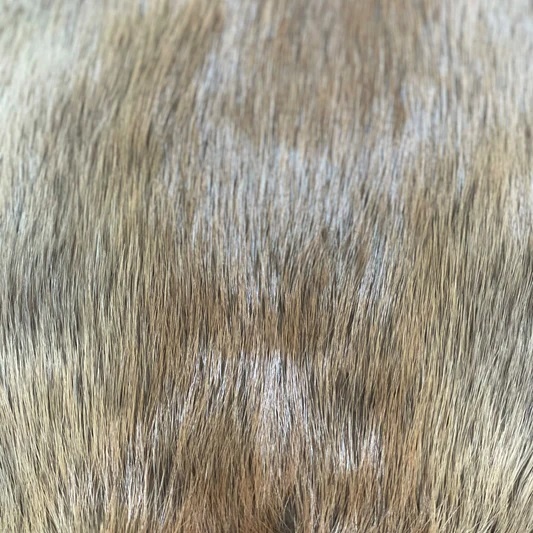Cahill's Vintage Fur ID Series #2: Beaver Fur
- Posted on
- By Rob Cahill
- Posted in Vintage Fur
- 0

Beaver is one of the softest and warmest furs with the widest range of uses over hundreds of years. Beaver fur is what drove demand for the exploration of North America by Europeans from the British Isles, France and the Netherlands, as early as the 16th century. If you grew up in Canada, you likely learned about the fur trade exploits of the Hudson Bay Company and Northwest Company in primary school. The demand was mainly for top hats, and the making of the softest and strongest felts used in hats and other clothing.
The top hat in the 18th and 19th centuries was typically made by shearing the beaver fur very low, dyeing it black and stretching the pelt (with the leather) to form the hat, much like a drum. The rest of the fur that was shorn off was used to make felt. This same process continues today to make the highest quality felt for hats including iconic cowboy hats like the Stetson. [Click here for a link to a video on how the Stetson cowboy hat is made and why they are so expensive.]

Like all furs, beaver fur has a soft and silky under-wool and a longer, coarser guard hair. The thickest and warmest beaver furs are from those harvested in the winter when the fur is considered ‘prime’. In fact, it is for this reason that government biologists establish harvesting seasons to help produce the highest quality fur, when managing beaver populations.
When the beaver fur is of the highest quality it can be plucked in the dressing or tanning process to completely remove the guard hair, then sheared to create an unbelievably soft, silky, and dense fur pile. It is the original fleece!
Beaver fur can be sheared without plucking, but this will leave the base of the guard hairs, so you can feel those ‘sticklers’ after shearing. Beaver fur is often left with natural long hair for a very warm fur with a sheen from the guard hair. Even with the guard hairs left on, they are more silky than you may think.

Beaver fur coats and jackets have been popular in modern times at least from the 1930’s. Techniques matured over the decades and amazing fashions came out of the 1980’s and 1990’s with advanced hand plucking, dyeing the fur into every possible colour and often sewn in an ‘intarsia’ technique with a pattern of geometrics, flowers and abstracts. Zuki was a Montreal based designer, furrier, and artist that rose to international fame in the 1980’s, using these techniques, who opened a new world of plucked and sheared fashions to the world.
On the classical side, hand-plucked and sheared natural beaver of the highest quality was called phantom beaver, as the natural shades created a range from silver/brown to dark brown throughout the piece.
Natural colours of beaver fur range from dark brown, to reddish, to blonde. As a rule of thumb, darker furs come from eastern North America, paler furs from the west, heavier fur (with a longer nap) from the north, and flatter, shorter haired furs from the south. Beaver is no different. The highest quality beaver fur will come from the James Bay Region in Quebec, where the James Bay Cree are famous for producing the highest quality beaver. They’re known for capturing the best prices on the world market for the natural qualities of the fur, but also the handling technique of the people, passed down for generations.

The Canadian furrier has always been the leader in craftsmanship with the beaver, specifically in Montreal, which is probably not a surprise. Most of the beaver coats that are in closets today were likely made in Montreal, or Peterborough, as my Dad, Bernie Cahill would buy skins from local trappers and we would make them in our small workshop in the store. It is really rewarding to see those coats come back into the store after 30-40 years to be remodeled or upcycled to pillows and throws.
If you have one of these coats, you have an iconic Canadian piece. Enjoy it and wear it. If you want it transformed into something else to wear, or as a home accessory, we will first need to ensure the leather has not dried out and it is still good to cut and sew. If that is the case, they can be made into a range of items to be enjoyed for another generation.
Sustainability is all about using what we have, repurposing what we have, and going natural. Enjoy your furs!






Comments
Be the first to comment...